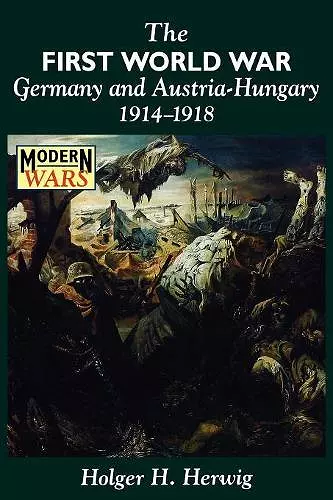The First World War
Germany and Austria-Hungary 1914-1918
Format:Paperback
Publisher:Bloomsbury Publishing PLC
Published:29th Nov '96
Currently unavailable, and unfortunately no date known when it will be back

Fills a key gap in the literature by analysing the war from the German and Austro-Hungarian perspectives Based on a decade's archival research, including material recently discovered in Dresden By an author whose previous work in the field has attracted considerable critical acclaim
"The great seminal catastrophe of the twentieth century', as American statesman George F Kennan described the war, has had no shortage of accounts seen chiefly from Allied perspectives. In using Vienna and Berlin as his vantage points, Herwig has comprehensively shown for the first time the other side of that prodigiously wasteful conflict.The Great War toppled four empires, cost the world 24 million lives, and sowed some of the seeds of another worldwide conflagration 20 years later. Yet, until now, there has been no comprehensive treatment of how Germany and Austria-Hungary - two of the key belligerents - conducted the war and what defeat meant to them. How did the Hohenzollern and Habsburg empires conceive of and conduct 'total war'? What impact did the prolonged fighting have on their societies? Drawing on his own archival research over the past decade, Holger Herwig analyses why Vienna opted for war in 1914 and why Berlin took the calculated risk to back that decision. The war plans and military campaigns on both Eastern and Western fronts are examined in detail and key battles, some of the bloodiest and most wasteful in military history, are narrated and analysed. On the home front, the mobilization of the civilian populations behind the war effort had profound social consequences. The militarization of the key war-related industries led to an industrial women's labour force emerging in both countries, deeply affecting the role of women in Germanic society. "The great seminal catastrophe of the twentieth century', as American statesman George F Kennan described the war, has had no shortage of accounts seen chiefly from Allied perspectives. In using Vienna and Berlin as his vantage points, Herwig has comprehensively shown for the first time the other side of that prodigiously wasteful conflict.
'Full of fascinating detail, strongly argued, and lucidly written, Herwig's study is certain to force a re-evaluation of the origins and course of World War One.' Choice 'A comprehensive study...we have needed for some time...one cannot but admire the breathtaking scope of [Herwig's] scholarship. A brilliant work by one of the real giants in the field. An absolute must read for anyone with even a passing interest in the subject.' New York Military Affairs Symposium 'In making extensive use of achive material in Germany and Austria... [Herwig] is able to destroy effectively the myth of a well-run German war machine.' The Times Literary Supplement '...the most thorough and readable one-volume history of the war so far available.' History '[Herwig] makes comprehensive use of archival sources...[He] combines this original scholarship with comprehensive synthesis of a generation's worth of specialized research. When clear organization and lucid prose are added to the mix, the result is a definitive analytical overview of the Central Powers at war.' The Journal of Military History 'Historian Herwig draws primarily on German and Austro-Hungarian archival sources (many of which have become accessible only in the last decade) to analyze the surprising weaknesses and blundering of those two powers. Following an informative preface by series editor and historian Hew Strachan and an introduction by the author, Herwig presents a terse narrative of the war's course. Chapter notes and an extensive bibliography contain a large number of German and Austrian official sources, while black-and-white maps illustrate major battles and campaigns.' Harry E. Whitmore
ISBN: 9780340573488
Dimensions: 233mm x 156mm x 36mm
Weight: 810g
512 pages